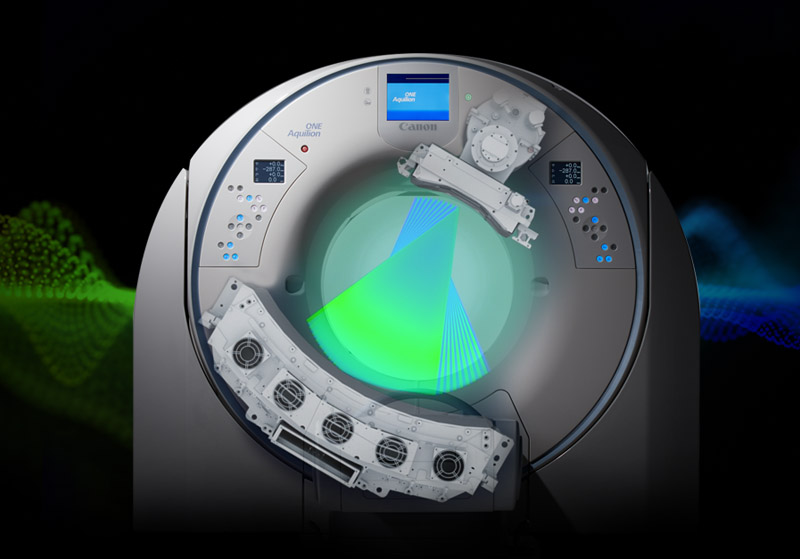
AI Deep Learning Reconstruction

AI Deep Learning Reconstruction
The Evolution of Deep Learning Reconstruction* (DLR)
Fully integrated, AI-trained, Deep Learning Reconstructions, that enhance clinical confidence and maximize the potential of your CT system, Image Quality and Dose Reduction.
- Advance Intelligent Clear-IQ Engine (AiCE) DLR was developed for Aquilion Precision, Ultra-High Resolution CT scanner.
- AiCE migrated to other CT systems, delivering exceptional dose reduction of up to 81% for all routine exams.1
- Precise IQ Engine (PIQE) Super Resolution2 for Cardiac Imaging was created by Deep Learning Neural Networks trained to improve spatial resolution.
- Super Resolution2 + Low Contrast Detectability + Low Noise + Low Dose with PIQE 1024* for Cardiac, Body and Lung3 imaging on the Aquilion ONE / INSIGHT Edition.

* Option
1 Based on the detectability index performance metric, a measure of signal to noise that takes into account the magnitude and texture of both the signal and the noise for a given LCD task. A model observer evaluation showed that equivalent low contrast delectability to FBP (range from 0.60 - 0.73) can be achieved with 69.0 to 81.0% less dose using AiCE at Standard setting for thin (0.5 mm) reconstruction slice thickness in simulated body phantom (MITA-FDA phantom with a body ellipse surrounding it). In clinical practice, use of AiCE may reduce the CT patient dose depending on the clinical task, patient size, anatomical location and clinical practice. Please consult with a radiologist and a medical physicist to determine the appropriate dose for obtaining diagnostic image quality in the particular clinical task. The Area Under the Curve (AUC) detectability metric is a way to define image quality based on how well an observer can detect a signal in the image. The AUC ranges from 0.5 to 1. The larger the value is, the better the image quality. An AUC of 0.5 can be interpreted as random guessing (50% correct), while a detectability of 1 corresponds to perfect detection (100% correct).
2 PIQE is designed to fully utilized the maximum resolution of the detector.
3 PIQE Lung based upon NEQ measurements, e.g. increase in NEQ by a factor of X (range y – z) for frequencies above 0.5 lp/mm for a 320mm FOV at an SSDE of 9mGy.






